- Step-by-step procedures
- Estimated completion time
- Resources labeled by icons






 direct teachers to the piece of content named in the procedures
direct teachers to the piece of content named in the procedures - Print-ready pages as indicated by
 are available as PDFs for download
are available as PDFs for download  located above “KEY WORDS” to access student handouts and vocabulary in Spanish
located above “KEY WORDS” to access student handouts and vocabulary in Spanish- Subtitles/CC [ found in
 ] available in Spanish and English for testimonies
] available in Spanish and English for testimonies
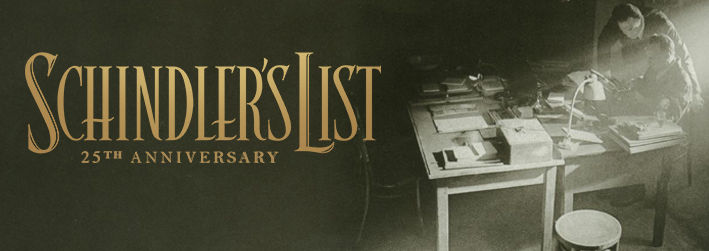
In honor of Universal Pictures’ rerelease of Schindler’s List, Echoes & Reflections has created a short, classroom-ready Companion Resource, that will help educators to provide important historical background and context to the film, as well as explore powerful true stories of rescue, survival, and resilience with their students.
Additionally, the following videos, recorded at Yad Vashem, feature Schindler survivors who speak of the impact Oskar Schindler had on their lives.
EVA LAVI TESTIMONY
NAHUM & GENIA MANOR
The posters feature the powerful words and experiences of Holocaust survivor and memoirist Elie Wiesel, Holocaust survivor Kurt Messerschmidt, and Anne Frank rescuer, Miep Gies. Each poster promotes meaningful conversation and reflection in the classroom, whether in person or in a virtual setting, and inspires students with powerful human stories of the Holocaust that can continue to guide agency and action as a result of studying this topic.
To support you in these efforts, we have also compiled several suggested classroom activities from teachers in our network that may be of use and interest.
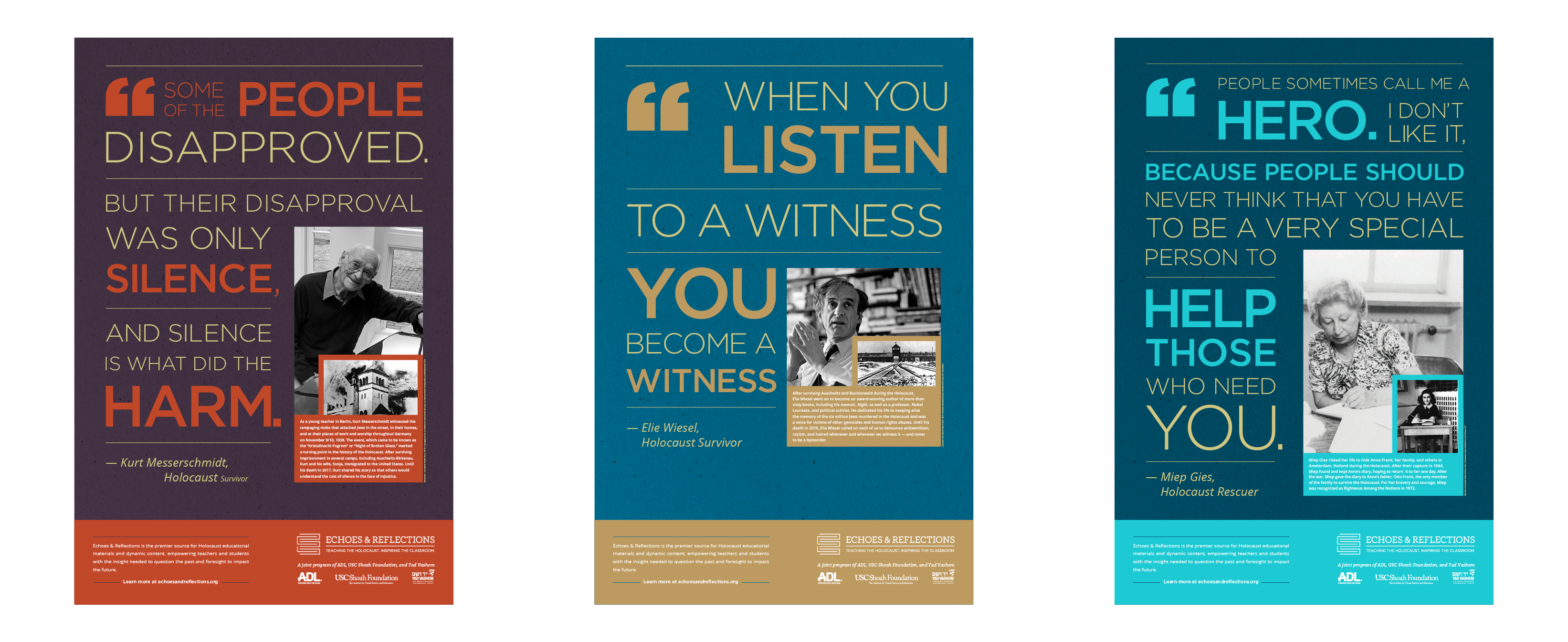
Please fill out the form below to access and download your PDF posters.

USC Shoah Foundation’s first podcast, We Share The Same Sky, seeks to brings the past into present through a granddaughter’s decade-long journey to retrace her grandmother’s story of survival. We Share The Same Sky tells the two stories of these women—the grandmother, Hana, a refugee who remained one step ahead of the Nazis at every turn, and the granddaughter, Rachael, on a search to retrace her grandmother’s history.
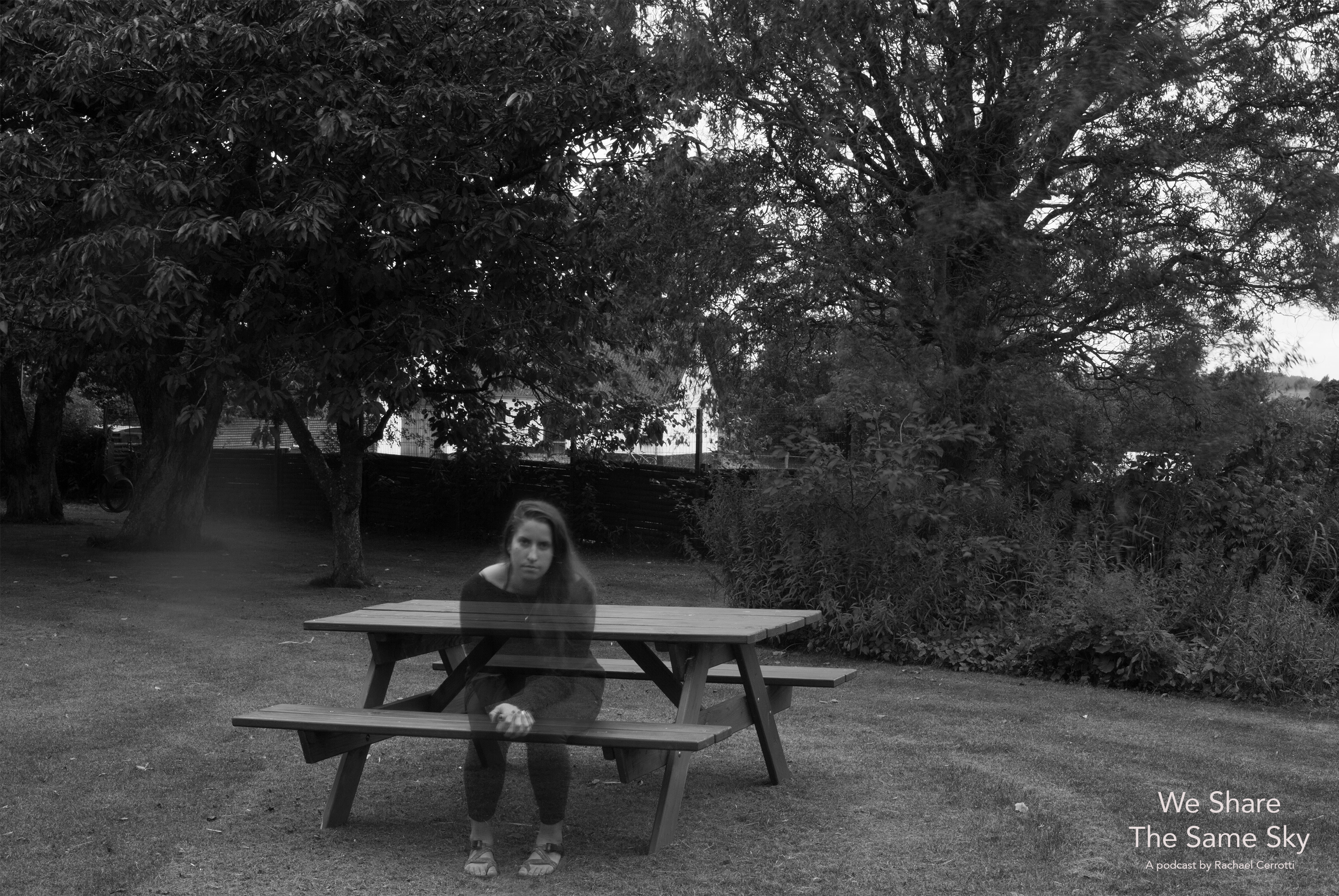
A self-portrait of Rachael while she is living on a Danish farm that is owned by the granddaughter of Hana’s foster mother from World War II. Photo by Rachael Cerrotti, 2017
In order to enhance its classroom use, USC Shoah Foundation and Echoes & Reflections have created a Companion Educational Resource to support teachers as they introduce the podcast to their students. This document provides essential questions for students, as well as additional resources and content to help build context and framing for students’ understanding of the historical events addressed in the podcast.
Access to the podcast, as well as additional supporting materials—including IWitness student activities, academic standards alignment, and general strategies for teaching with podcasts—can all be found at the We Share The Same Sky page in IWitness.
Note: Due to the subject nature, the podcast is appropriate for older students, grades 10-12. As always, teachers should review the content fully in advance to determine its appropriateness for their student population.

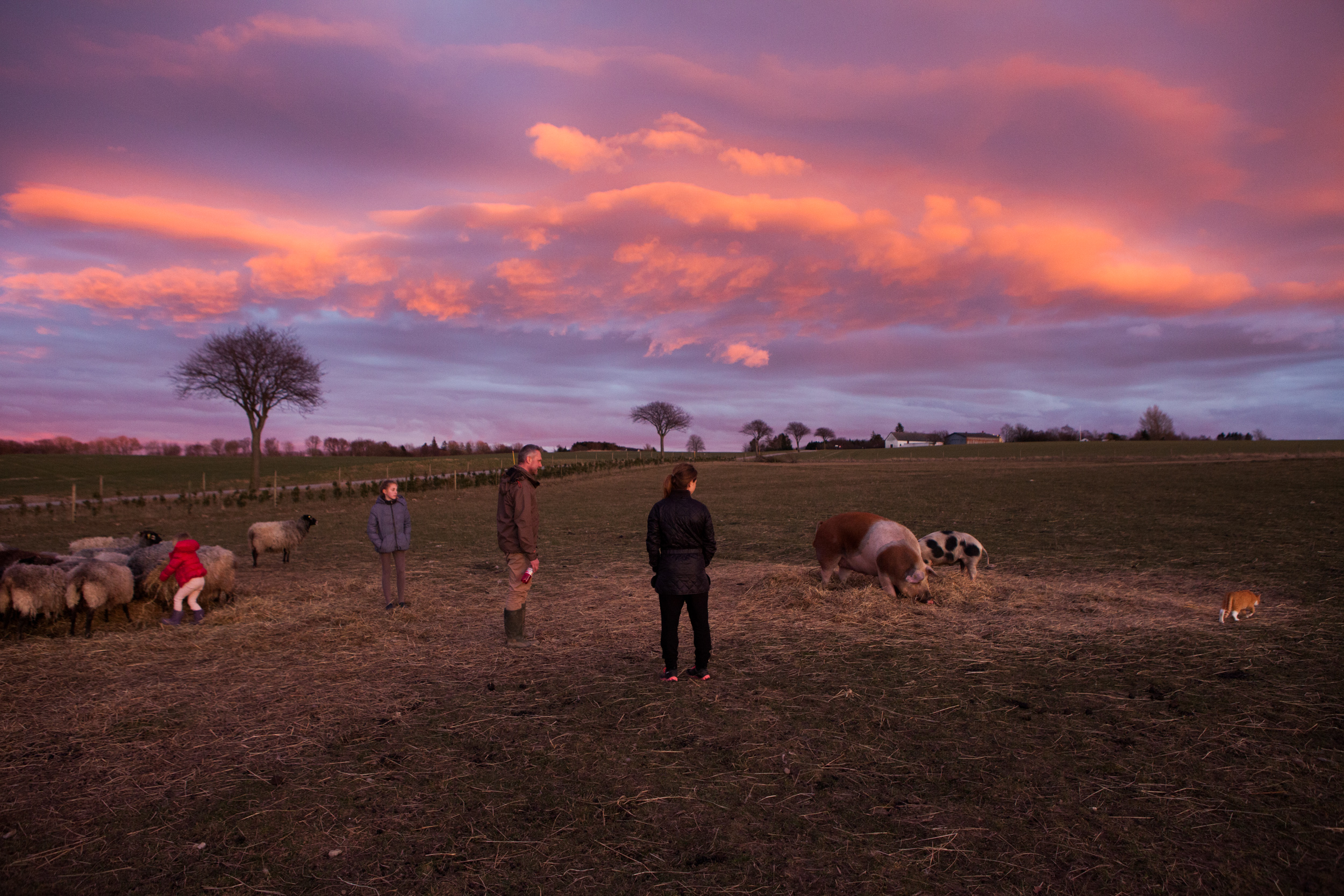
After many years of research and digitizing the archive her grandmother left behind, Rachael set out to retrace her grandmother’s 17 years of statelessness. Her intention was to travel via the same modes of transportation and to live similar style lives as to what her grandmother did during the war and in the years after. That meant that when she got to Denmark, she moved to a farm. Rachael moved in with the granddaughter of her grandmother’s foster mother from World War II and traded her labor for room and board as Hana once did. This picture is from that first visit in the winter of 2015. Since this time, Rachael has spent many more months living on this farm. It is owned by Sine Christiansen and her family. Sine is the granddaughter of Jensine, one Hana’s foster mother from World War II. Photo by Rachael Cerrotti, 2015

A self portrait of Rachael overlooking the exact spot in Southern Sweden where her grandmother’s refugee boat came to shore in 1943. Photo by Rachael Cerrotti, 2016



 English
English Español
Español
- RABBI BENT MELCHIOR, JEWISH SURVIVOR
Below is information to keep in mind when teaching the content in this unit. This material is intended to help teachers consider the complexities of teaching about rescuers and aid providers and to deliver accurate and sensitive instruction.
|
|
This unit provides students with an opportunity to learn about the types of rescue that occurred in Nazi-occupied Europe and to consider the moral and ethical choices that non-Jews made in order to help Jews survive. Students analyze visual history testimony, primary source material, and various texts in order to deepen their understanding of the factors that influenced individuals, groups, and societies to act on behalf of Jewish victims of the Holocaust. Throughout the unit, students have an opportunity to consider the price of apathy and indifference in the face of injustice.
- What difference can one person make in the lives of others?
- In what ways were rescuers both extraordinary and ordinary?
- How can studying the choices of rescuers during the Holocaust influence our choices today?
- What is the price to society of apathy and indifference in the face of injustice?
|
|
ACADEMIC STANDARDS
Academic and SEL Standards View More »
School Library Standards View More »
View More »
View More »
Testimony Reflections View More »
ACADEMIC STANDARDS
Academic and SEL Standards View More »
School Library Standards View More »
View More »
View More »
Reflexiones de los Testimonios Ver más »
120-150 minutes
120-150 minutes
LESSON 1: The Decision to Rescue
In this lesson, students investigate different ways in which non-Jews intervened to save the lives of Jewish victims of the Holocaust. Through case studies, survivor testimony, and analysis of texts, students identify the various factors that influenced rescuers to act and explore the moral complexities of their behavior.
| 1 | In small groups, students explore one of the case studies below, which all highlight a pivotal moment in the lives of ordinary individuals faced with the decision to help Jewish victims of the Holocaust or remain uninvolved. Groups discuss the situation and record their thoughts in response to the questions at the bottom of the handout. |
- Case Study: Arie van Mansum
- Case Study: Renee Scott
- Case Study: Roddie Edmonds
| 2 | The class gathers and discusses their reactions to the case studies, especially the factors that might have led each individual to help or remain uninvolved. |
| 3 | Students watch testimony clips and review the biographical information of the individuals profiled in the case studies, who all made the decision to come to the rescue of Jewish people: [L]Arie van Mansum[/L], [L]Renee Scott[/L], and Roddie Edmonds (bio only). As they watch and review, students take notes on the Testimony Reflections handout, found at the beginning of this unit. |
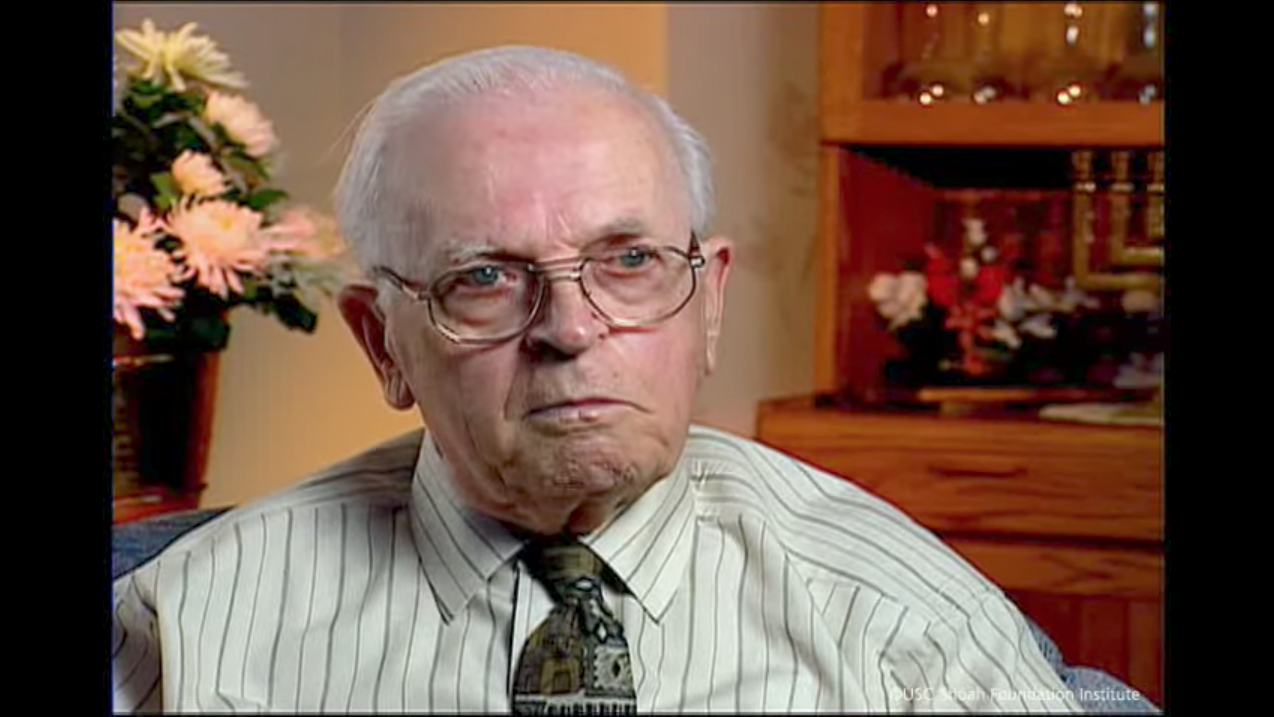

View More »


View More »
| 4 | After viewing the testimony clips and reading the bios, students journal and/or participate in a whole group discussion in response to some of the following questions: |
|
|
| 5 | The handout, Those Who Dared to Rescue, is distributed. Individually or in pairs, students read and annotate the handout by highlighting examples of factors that influenced rescuers and jotting their reactions in the margins. The class then discusses some of the following questions: |
|
|
| 6 | Students continue to think about the motivations of rescuers and the notion of heroism by analyzing a speech by Miep Gies, one of Anne Frank’s rescuers. The handout Anne Frank’s Legacy is distributed and students read it individually or as a class. Students then conduct a “one-question interview” using the following process: |
Anne Frank’s Legacy View More »
 IWITNESS ACTIVITY
IWITNESS ACTIVITYWhy Did Some Choose to Rescue?
here »
El Legado de Anne Frank Ver más »
 IWITNESS ACTIVITY
IWITNESS ACTIVITYWhy Did Some Choose to Rescue?
here »
- In small groups, students identify a central theme in the speech and encapsulate it in a word (e.g., heroism, empathy, indifference, othering, risk, remorse).
- Groups generate one question related to their theme to pose to others. The question should have a direct connection to the reading. (E.g., Miep says she was not a hero, just a very common person. What do you think?)
- Students write their question at the top of a sheet of paper. They circulate around the room and find a partner (not from their small group). Partners interview one another by posing their question and recording a summary of the response. Students repeat this process until they have interviewed at least three peers.
- Students return to their small groups and discuss the responses they received to their questions. At the bottom of the page on which they took notes, students write a brief reflection on the conclusions they can draw from their interviews.
| 7 | The class gathers to discuss the conclusions they drew from their one-person interviews and the insights they took away from Miep Gies’ speech. |
| 8 | Students are assigned one of the following exercises in order to deepen their understanding that rescuers were ordinary people with human faults even though they performed extraordinary acts. |
Rescue in the Sewers View More »
The Girl in the Green Sweater View More »

View More »
Rescue in the Sewers View More »
La Nina del Sueter Verde Ver más »

View More »
- IWitness – Oskar Schindler: A Flawed Hero: In this web-based activity, students investigate the ethical complexity of Schindler by analyzing testimony, engaging in written reflection, and developing a word cloud representing what they have learned. [NOTE: To use IWitness activities, teachers must set up a class within the system and assign work to students, who then create their own account to access the assignment.]
- Leopold Socha: Socha was a sewer worker in Lwów (pronounced Lvov), then in Poland, who hid and cared for a group of Jewish people in the sewers beneath the city streets. Though he engaged in illegal activity during his lifetime and held some antisemitic views, Socha evolved to care deeply about the people in his charge. Students follow the steps below to investigate Socha’s story. [NOTE: In preparation for this activity, the excerpts from the handout, The Girl in the Green Sweater, are enlarged and posted at four different stations.]

- Watch the testimony clip and read the biography of [L]Kristine Keren[/L], who was 8 years old when she hid with her family in Lwów’s sewers. Fill in the Testimony Reflections handout as you view.
- Move around the room and read the excerpts from The Girl in the Green Sweater by Krystyna Chiger (Kristine Keren). As you read each, participate in a “group annotation” by attaching a sticky note with your reaction to the passage and/or your classmates’ comments.
- Divide into small groups and discuss some of the following questions:
- Did Socha’s troubled background surprise you? How did this affect your perception of this particular rescuer and rescuers in general?
- What is redemption and what role did it play in Socha’s decisions? Do you believe that people can transform over time? Explain.
- How did Krystyna’s parents know that Socha saw them as “human beings instead of a group of desperate Jews”? How does this relate to other rescuers you have learned about?
- Rescuers are often described as selfless (concerned more with others’ needs than one’s own). Would you characterize Socha as selfless? Why?
| 9 | As a summative task, students create a “3 x 3” journal addressing the question below, posed by Elie Wiesel in one of the unit readings. The journal is a grid that includes the names of three rescuers about whom students have learned in the first column, and unique qualities or motivations for each in the other columns. Students cite evidence from unit sources to support their ideas. |
“Only a few had the courage to care – these few men and women were vulnerable, afraid, helpless. What made them different from their fellow citizens?”
120 Minutes
120 Minutes
LESSON 2: Groups that Rescued
In this lesson, students consider groups of people that engaged in rescue efforts during the Holocaust. Through textual sources and excerpts from a podcast, students investigate the conditions in Denmark that allowed for the rescue of over 7,000 Jews in that nation. Students then analyze visual history testimonies and primary source documents to learn why the Kindertransport program in Great Britain was an exceptional example of rescue.
| 1 | In pairs, students discuss the prompt below. The class then gathers and focuses on the examples of groups who helped others. They consider what conditions or influences might have enabled these groups to overcome the bystander effect. |
In psychology, the “bystander effect” says the more people there are who witness someone in distress, the less responsible each individual feels to help. The likelihood that a person will receive help decreases as the number of witnesses increases. Discuss one instance in which a group of people neglected to help or acted to help someone in need. Why do you think the group behaved as it did in that instance?
| 2 | Students learn that, during this lesson, they will explore groups who helped Jewish victims of the Holocaust despite the many pressures to remain uninvolved. They begin by listening to excerpts from the podcast, We Share the Same Sky. Chapter V of the podcast recounts the rescue operation carried out by large numbers of Danish people that saved 7,200 Jewish lives in October 1943. |
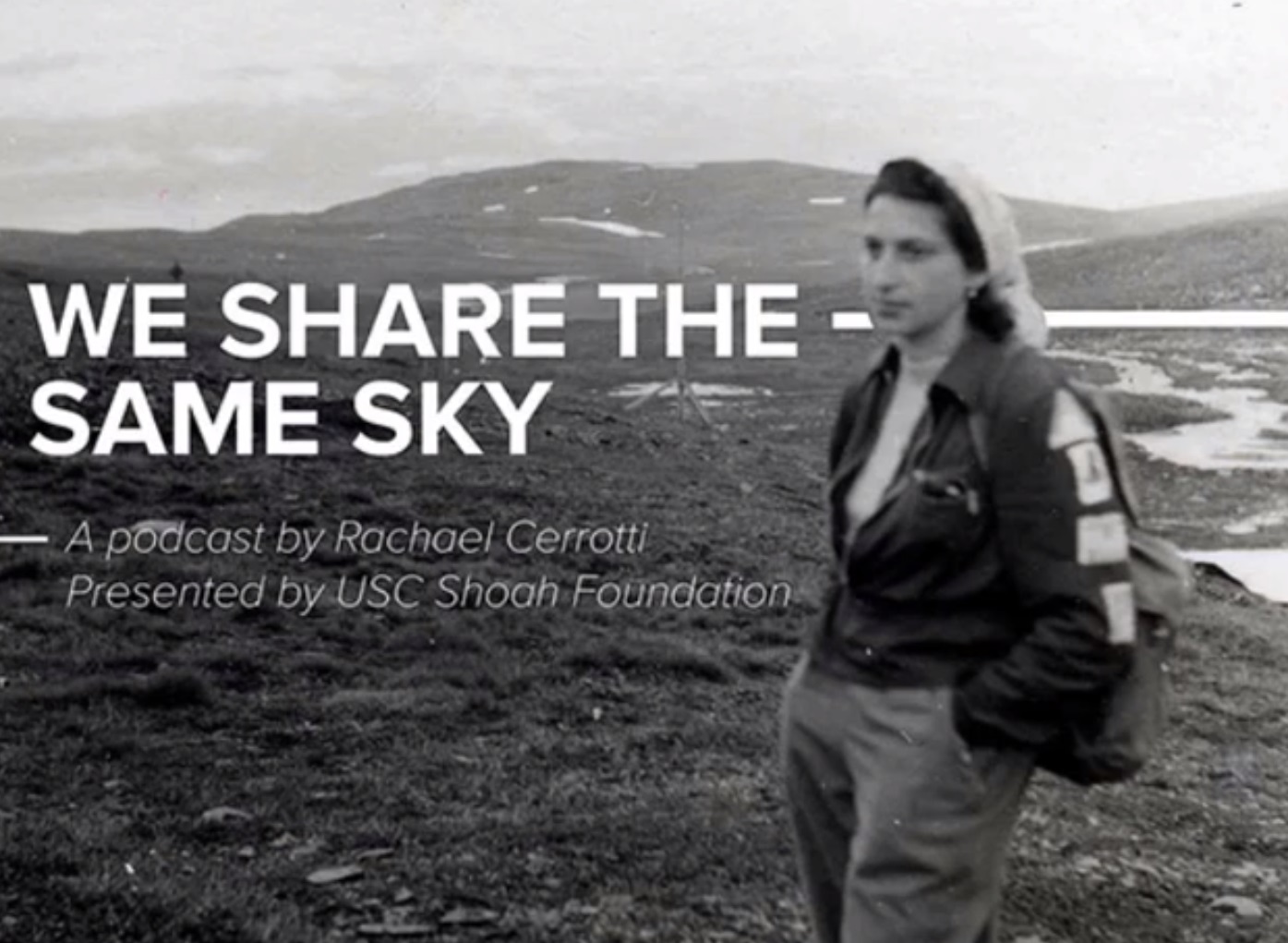
View More »

View More »
| 3 | Students prepare a character map to be completed while listening to the podcast. Before listening, students are introduced to the story’s three central characters and note information about them in the center of their map. While listening, students add other characters from the story to their maps. For each character, they list their role, how they helped, and/or why they helped (The handout, We Share the Same Sky Excerpts, includes a transcript of the passages for students who would benefit from a text version).
|
| 4 | Students further reflect on the rescue operation through an analysis of quotes by people who were part of Danish society at the time. Each student receives a quote, cut apart from the handout Quotes: Danish Rescue and Resistance. (As there are only 12 quotes, more than one student may receive the same quote.) Students move around the room and find a partner. The partners read aloud and discuss their quotes. They add new “characters” to their maps, noting the motivations of rescuers. Students find a new partner and repeat this process until they have considered at least three quotes. |
| 5 | Individually or in pairs, students read the Rescue in Denmark handout for additional context on the rescue operation. They annotate the handout by highlighting the roles and motivations of people who helped Jews, focusing particularly on “The Elsinore Sewing Club.” Students continue to add information to their character maps. |
| 6 | Students share their character maps in small groups and identify common behaviors and motivations across the various members of Danish society. The class gathers and discusses some of the following questions: |
|
|
| 7 | The handout, Background: Kindertransport, is projected or distributed. Individually or as a class, students read this brief overview and note any questions that arise for them about the Kindertransport program. These questions are posted so that the class can revisit them as they learn more. |
| 8 | Students watch testimony clips of Jewish survivors who were part of the Kindertransport: [L]Eric Richmond[/L], [L]Lynn Orne[/L], and [L]Vera Gissing[/L]. As they watch the clips, students take notes on the Testimony Reflections handout. |


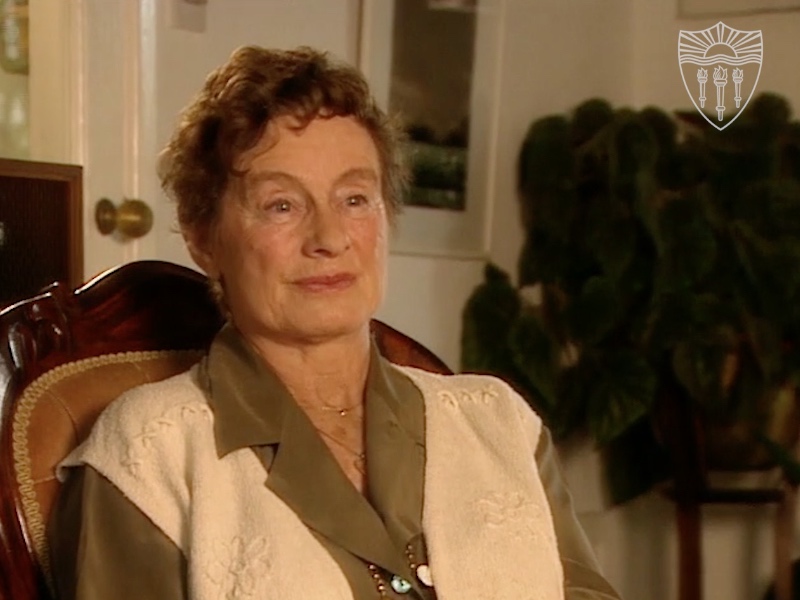



| 9 | After viewing the testimony clips, students journal or participate in a whole group discussion in response to some of the following questions: |
|
|
| 10 | Students analyze primary documents that deepen their understanding of public sentiment regarding the Jewish refugee crisis in the late 1930s. In pairs, students are assigned one of the handouts below to examine. After reading the document, they discuss and/or write responses to the “Think it Through” questions on the handout. Then two pairs who have read different documents join together. Each pair presents a summary of their document and, as a group, they compare British and American viewpoints as represented in the source material. Through this exercise, the class considers how exceptional it was for Great Britain to accept Jewish refugees in a climate in which most other nations had closed their doors.
|
Lord Baldwin’s Appeal, Great Britain, 1938 View More »
Letter to the Editor, Arizona Republic, 1939 View More »
View More »
| 11 | Students review letters written by the parents of Kindertransport children in order to consider their experiences and what they sacrificed to rescue their own children. In small groups, students are assigned one or both of the documents below. After reading the background and letters, they select three of the “Reflect and Respond” questions to explore through writing or discussion.
|
| 12 | As a summative task, students respond to the words below from Rabbi Bent Melchior in We Share the Same Sky. Students fold a sheet of paper in half. On one side, they list at least three ways in which Holocaust rescuers embody the idea in the quote, citing evidence from lesson sources. On the other side of the sheet of paper, they list at least three ways in which they can apply this idea to their own lives.
|
60 minutes + time for research project
60 minutes + time for research project
LESSON 3: Righteous Among the Nations
In this lesson, students learn about the designation, “Righteous Among the Nations,” and its significance in the history of the Holocaust. Using visual history testimony, primary source documents, and other texts, students investigate the actions and impact of rescuers designated as “Righteous,” and inquire into the importance of their stories in today’s world.
| 1 | Students write the term selfless in the middle of a sheet of paper. They engage in a brief free-write in response to the following questions: “What does it mean to do something truly selfless? Is it important to be recognized for selfless acts?” Students write narratively, free associate, and/or sketch their thoughts and then share with a partner. The class learns that they will be investigating Holocaust rescuers who have been recognized for their selfless acts with the designation, “Righteous Among the Nations.” |
| 2 | Students watch a testimony clip of a rescuer designated as “Righteous Among the Nations”: [L]Irene Gut-Opdyke[/L]. As they watch the clip, students take notes on the Testimony Reflections handout. |
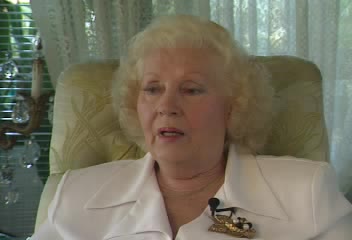

| 3 | After viewing the testimony clip, students journal or participate in a whole group discussion in response to some of the following questions: |
|
|
| 4 | Students learn that Irene was designated as a “Righteous Among the Nations” and are provided with the following background information: |
View more »
View more »
In 1953, the Knesset (Israeli parliament) passed the Holocaust Martyrs’ and Heroes’ Remembrance Authority Law, which created Yad Vashem. The law mandated that Yad Vashem identify and recognize non-Jews who had risked their lives during the Holocaust to save Jews in countries that had been under Nazi rule or that had collaborated with the German regime. In order to recognize people as Righteous, Yad Vashem set up a public Commission, headed by a Supreme Court Justice, which examines each case and is responsible for granting the title. Those recognized receive a medal and a certificate of honor and their names are commemorated on the Mount of Remembrance in Jerusalem. The medal is inscribed with a phrase from the Talmud, a Jewish religious text, that says, “He who saves one life saves the world entire.” The historical account of the Holocaust would not be complete without the extraordinary stories of the “Righteous Among the Nations.”
| 5 | In pairs, students discuss what they think the criteria should be for receiving the “Righteous” designation based on what they have learned about rescuers thus far. The handout, Yad Vashem Criteria for “Righteous Among the Nations” is then distributed and the class reviews together. Students discuss the following questions: |
|
|
| 6 | Students learn that they will investigate a “Righteous Among the Nations” designee in detail, and create a “one-pager” reflecting their actions and impact. The “one-pager” is a physical or digital page on which students convey their unique understandings and insights in a creative fashion that incorporates textual and visual elements. The “one-pager” for this assignment:

|
| 7 | Students work on their investigations individually, in pairs, or small groups. They are assigned one of the options below – a class investigation of the same individual using the handouts provided or an independent investigation of different individuals using online resources. |
Budapest: Historical Background View more »
A Swedish Rescuer in Budapest View more »
Refuge In the Circus View more »
Refuge In the Circus Ver más »
Budapest Contexto Historico Ver más »
Un Rescatador Sueco en Budapest Ver más »
- Class investigation of Raoul Wallenberg, a Swedish diplomat who saved thousands of Jews in German-occupied Hungary by issuing protective passports and sheltering them in buildings designated as Swedish territory:
- Read the handout, Budapest: Historical Background
- Read the handout, A Swedish Rescuer in Budapest and note the actions and impact of the subject as well as your reactions
- View the testimonies of Vera Goodkin, who was saved by Wallenberg, and Per Anger, a Swedish diplomat who served with Wallenberg (To view the testimonies, please click the link and navigate to the “Videos” tab). Use the Testimony Reflections handout to record reactions and ideas.
- Independent investigation of a subject from the “Righteous Among the Nations” Featured Stories page:
- Choose a subject that includes a collection of photos, videos, and documents.
- Read the story on the main page and note the actions and impact of the subject as well as your reactions.
- Observe at least one photo and note what it reveals about the subject’s life or impact.
- View at least one video and note what it reveals about the subject’s life or impact.
- Analyze at least one document and note what it reveals about the actions and impact of the subject.
| 8 | Students’ “one-pagers” are displayed in a gallery online or in the classroom. Half of the class stands (physically or virtually) by their work and provides a brief tour or explanation of their “one-pagers’ to the other half of the class, who circulates and observes. Students then switch roles so that the tour guides become the observers. Students observe at least three of their classmates’ “one-pagers” in this way. |
| 9 | Following the gallery walk, the class debriefs using the following questions: |
|
|
| 10 | As a summative task, students respond to the Talmudic idea, “Whoever saves one life saves the world entire.” Using evidence from unit sources, they list at least five ways in which the behaviors of rescuers had an impact beyond the individuals whose lives they saved. |
The ideas below are offered as ways to extend the lessons in this unit and make connections to related historical events, current issues, and students’ own experiences. These topics can be integrated directly into Echoes & Reflections lessons, used as stand-alone teaching ideas, or investigated by students engaged in project-based learning.
| 1 | Visit IWitness (iwitness.usc.edu) for testimonies, resources, and activities to help students learn more about rescuers and aid providers during the Holocaust. |
| 2 | Write a letter to someone that you learned about in this unit. Tell the person what you are thinking and feeling after learning about their experiences. |
| 3 | Think about the people you met in this unit. All of them see themselves as “ordinary” people and yet they all did extraordinary things. Write an essay in which you address the following questions: How might this be explained? Why do you think some people became rescuers during the Holocaust while most remained bystanders? What moral choices were made by rescuers during the Holocaust and what were the ongoing challenges they faced? |
| 4 | Read either Anne Frank: The Diary of a Young Girl (Anchor Books, 1996) or Miep Gies’ Anne Frank Remembered: The Story of the Woman Who Helped to Hide the Frank Family (Touchstone, 1988). In small groups made up of students who have read both books, develop a graphic organizer comparing and contrasting the experiences of Anne Frank and Miep Gies. Refer to the Echoes & Reflections Timeline of the Holocaust to better understand the events in the books within the larger context of the Holocaust. |
| 5 | View Yad Vashem’s online exhibit, Besa: A Code of Honor. It tells the story of the heroic actions of the people of Albania – the only European country with a Muslim majority – who rescued Jews during the Holocaust in keeping with their national code of honor, Besa (literally “to keep the promise”). Read the stories of at least three Albanians designated as “Righteous Among the Nations.” Create a portrait of one by sketching an outline of the individual(s) or a site in the story and filling the inside with writing and imagery that conveys how Besa was fulfilled. As a follow-up, write about your personal code of honor and how you can use these moral guidelines to help others. |
| 6 | Together with a partner, choose one of the following poems, written by survivors who were part of the Kindertransport and examining questions of guilt and duty: Holocaust 1944 and When It Happened. Read the poem together and discuss or write in response to some of the following questions:
|
| 7 | Write about a time when you made a conscious decision to help someone in a difficult situation or about a time when someone came forward to help you. Describe the event in detail and tell how you felt during the situation. What were some of the complications or difficulties that you faced? Were there any moral or ethical dilemmas that needed to be addressed? What were your feelings after the situation ended? |
Battle of the BulgeBuchenwald
bystanderconcentration campdeportationextermination camp“Final Solution of the Jewish Question”Gestapo
Kristallnacht Pogrom
Mauthausen
NazioccupationperpetratorPersecutionpropagandaresistance
victimWagner-Rogers BillWarsaw ghettoxenophobia
Yad Vashem






